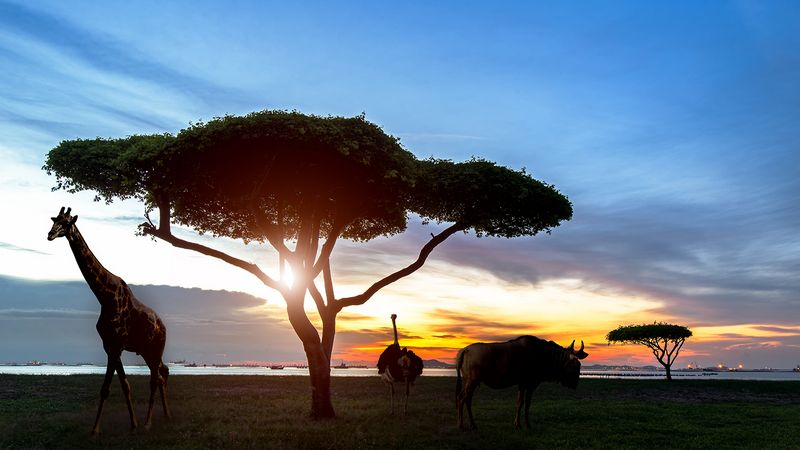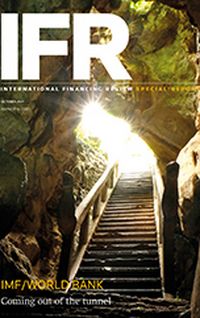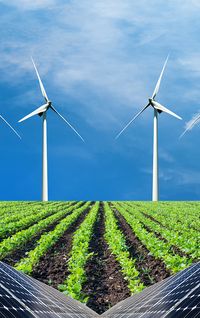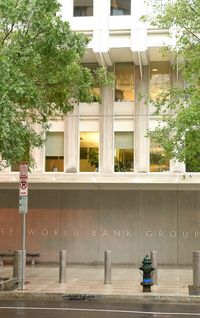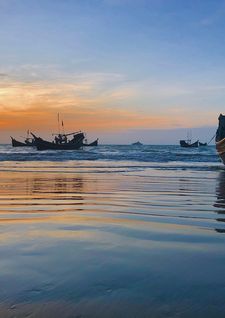Sub-Saharan Africa is expected to recover more slowly from the Covid-19 crisis than other regions. Its countries need to undertake wholesale debt restructuring to bring their indebtedness down and avoid defaults.
By mid-September this year, sub-Saharan Africa (SSA) had recorded 5.5 million cases of Covid-19 and 132,000 deaths. The pace of vaccination has been a lot slower than in other regions. Less than 2% of the population has been fully vaccinated, well below the level needed to reach herd immunity and far short of rates seen in advanced economies (56%) and non-SSA emerging markets and developing economies (28%), according to the International Monetary Fund.
The region’s economy was hammered last year: its GDP contracted by at least 1.8% – the worst reading on record – according to the IMF. By the end of 2021, the region’s real GDP per capita will likely regress to its level in 2008, according to the World Bank. In Africa, Covid-19 could push up to 40 million people into extreme poverty, erasing at least five years of progress in fighting poverty.
This year, SSA's growth is projected to recover to 3.4% but represents the slowest recovery in the world. In comparison, the IMF is forecasting the world economy will surge by 6% this year, emerging Asia by 7.5% and Latin America by 4.6%.
Furthermore, divergence in recoveries around the world is expected to persist into the medium term. While advanced economies are projected to return to their pre-crisis path by 2023, the pandemic has permanently lowered the GDP path in SSA, suggesting a permanent loss of real per capita output of 5.6%, according to the IMF.
The pandemic has also pushed up debt levels in the region. Its overall level of public debt jumped by around six percentage points to 58% of GDP in 2020, according to the IMF. The World Bank is even more pessimistic about African debt: it forecasts that the median debt level will peak at 69% of GDP this year, up from an estimated 65% of GDP in 2020.
Among the region's 35 low-income countries, 17 are at high risk of debt distress or already there (currently, six countries are deemed in debt distress: Republic of Congo, Mozambique, Sao Tome and Príncipe, South Sudan, Sudan, and Zimbabwe).
"SSA has been hit particularly hard by the economic fallout from the pandemic," said Moritz Kraemer, chief economist at CountryRisk.io. "And given that vaccination proceeds at a snail’s pace, a true economic recovery will remain elusive. Expect the IMF and the World Bank to stress and reiterate their warning of a 'divergent recovery', leaving much of the developing world behind.
"I firmly expect some African sovereigns will default over the coming year or two. Some of the fiscal indicators scream unsustainable. Debt ratios have reached the highest ratio this century."
Masood Ahmed, president of the Center for Global Development, a Washington-DC based think tank, said: "While the advanced world is moving on to the post-Covid recovery, Africa will continue to deal with the pandemic into 2022 and possibly beyond."
Those African countries that had stronger economic growth and fundamentals coming into the crisis are generally seeing the fastest growth out of the pandemic – for example, Benin, Ivory Coast, Kenya, Rwanda, Senegal and Uganda. Mauritius – despite its greater tourism dependence – is also seeing a strong recovery. Botswana, too, is witnessing a strong recovery, perhaps because of higher commodity prices.
Those countries with pre-existing concerns or weaker economic fundamentals have experienced slower recoveries, including Angola, Chad and Zambia. Ethiopia – which managed to record strong growth last year (6%) – is expected to slow sharply to 2% this year as well.
Two-speed growth
"Even prior to the crisis, the region’s outlook had already displayed signs of a two-speed growth trajectory, with fragile and resource-intensive countries faring significantly worse than non-resource intensive countries," said Abebe Aemro Selassie, the director of the IMF’s African department. "As a result of the Covid-19 crisis, these pre-existing growth differentials have worsened.
"Tourism-dependent countries were hit the hardest due to a halt in global tourism and – although growth has returned to pre-pandemic levels – these countries face permanent income losses as large as 16% of GDP. Likewise, oil exporters experienced substantial contractions owing to a collapse in oil prices and, despite the recovery of oil prices, continue to diverge from the rest of the region in their recovery trajectory.
"The crisis had a more muted initial impact on non-resource intensive countries, which – having a significantly more diversified economic structure – were also able to adapt quickly and bounce back swiftly. The underlying reason for such diverging recoveries is most likely multi-faceted, as countries’ quality of institutions, governance, fiscal credibility, administrative capacity, business climate and degree of diversification all matter for their growth trajectories."
Nigeria – Africa's biggest economy at US$514bn and with 211 million inhabitants – is in poor economic shape. Annual income per head is estimated at US$2,431. Its economy contracted by 1.9% last year and is expected to expand by only 2.5% this year. In September, its annualised inflation rate stood at 17%, according to Nedbank.
Currently, one-third of 70 million people who should be working more than 40 hours a week are out of work, according to the University of Lagos. The country has a very low tax base: tax collections last year amounted to only 6.1% of GDP.
The country also has a complicated exchange rate regime that puts foreign investors off. The authorities operate an official exchange rate for the naira but a parallel, informal rate for the currency exists as well. In May, Nigeria’s central bank devalued the official naira rate by 7.6% from 379 to the US dollar to 410.25. However, the parallel market rate was around 550 naira to the dollar on September 15 this year. The IMF and the World Bank have been pushing Nigeria towards unifying its exchange rates.
Its fiscal deficit was running at 6.1% in the first quarter this year against 3.6% in the fourth quarter last year, according to FBNQuest Research. Experts say that the country's deficit monetisation is unlikely to be on a scale that prompts a dramatic spiral in prices in the manner of Venezuela or Zimbabwe but it will keep inflation high in the coming years.
South Africa is the region's second biggest economy at US$329bn with 60 million inhabitants. It is in better shape than Nigeria but still has an array of structural problems. Annual income per head is US$5,443. The country's annualised consumer price inflation eased to 4.6% in July from 4.9% in June, according to Statistics South Africa.
It is estimated that the economy contracted by 6.4% last year and is forecast to expand by 5.3% this year, according to Nedbank. Its recovery quickened in the second quarter this year to 1.2% as restrictions to contain the pandemic were eased. However, high unemployment is a big issue – it stood at 34.4% in June. Nedbank estimates the country's fiscal deficit at slightly under 10% for the 2020–2021 fiscal year and forecasts it will be around 7% for FY 2021–2022. Total government debt is around 72% of GDP.
First aid
Both South Africa and Nigeria for the first time in their recent histories received support under the IMF’s Rapid Financing Instrument last year: South Africa to the tune of US$4.3bn and Nigeria US$3.4bn. The RFI provides emergency assistance to all member countries facing an urgent balance of payments issue, including those arising from commodity price shocks.
"Economic numbers out of South Africa are now better than the authorities and economists were originally expecting," said Isaac Matshego, a senior economist at Nedbank. "Unfortunately, unemployment in the country remains high. This is partly for structural reasons – the economy is dominated by financial services and is highly dependent on technology. These are not big employment generators."
One of the biggest concerns economists have about the pandemic's economic fallout in Africa is the rise in countries' level of indebtedness. The IMF says many differences exist in debt levels among and some have seen a marked increase in the share of tax revenues devoted to interest payments. Debt service relative to tax revenues exceeds 20% in Kenya, Nigeria and Zambia. In Ghana, it is more than 40%.
Debt levels are expected to remain on an upward trajectory in a number of countries, including Nigeria, Burkina Faso, Burundi, Ghana, Madagascar, Malawi, Rwanda and Uganda, according to the World Bank. In 2020, 53% of the region’s low-income countries were assessed to be 'at high risk' of or already in external debt distress, according to the IMF-World Bank debt sustainability assessments. In early 2021, this had risen to 55%.
Public debt across the region more than doubled to 57% of GDP during the decade running up to the pandemic. Furthermore, African sovereigns have increasingly assumed more costly commercial debt rather than the cheaper concessional debt they took on previously (commercial debt made up 40% of Africa's external debt in 2020, up from only 17% in the year 2000, according to the African Development Bank). This has left most countries in the region with less fiscal space to respond to the pandemic, with budget deficits rising by less than 3% of GDP in SSA last year compared with almost 5% in emerging markets and 9% in advanced economies, according to Tellimer, a London-based economic consultancy.
Debt build-up
The issue for many African nations is the high level of public debt built up again since they enjoyed US$100bn of debt relief under the Heavily-Indebted Poor Countries Initiative and the related Multilateral Debt Relief Initiative during the past 25 years. Hard figures for African debt – especially that owed to China – are difficult to obtain but SSA had total external debt of US$583bn at the end of 2018, according to the World Bank.
"The Covid-19 pandemic has taken a large toll on economic activity in SSA, putting a decade of hard-won economic progress at risk," said Albert Zeufack, the World Bank's chief economist for Africa.
"As government revenues have fallen due to the contraction in economic activity and spending has increased to strengthen the health sector and mitigate the economic impact of Covid-19 (for example, social protection measures and support to viable firms), the financing needs of governments increased. Many African governments resorted to external borrowing."
"Debt vulnerabilities are now more severe than they were before the pandemic – while lower real growth has been largely offset by lower real interest rates, debt burdens and budget deficits are now higher and more ambitious consolidation will be required to set debt on a downward path in many countries," said Patrick Curran, senior economist at Tellimer.
"With less ability to print money than more developed economies, less assured access to international financial markets and more shallow domestic financial sectors, many countries in SSA will have to embark on fiscal consolidation programmes to ensure their debt remains sustainable."
Last year, the IMF and the World Bank spearheaded one of the most important debt relief programmes – known as the Debt Service Suspension Initiative. The G20 took up this initiative and agreed to freeze bilateral government loan repayments for 76 low-income countries – including many located in Africa – until the end of this year and called on private sector creditors to participate on a voluntary basis. The debt standstills are designed to be net present value neutral.
The DSSI deferred about US$6bn in debt payments in more than 40 countries – including around 30 in Africa – in 2020 and is estimated to deliver another US$7bn in 2021. However, more than 10 African countries received a credit rating downgrade after joining it.
In November 2020, the G20 endorsed the Common Framework for Debt Treatments beyond the DSSI, an initiative developed to support low-income countries facing unsustainable debt in a structural manner. It brings together G20 and Paris Club creditors to coordinate and cooperate on debt treatments – on a case-by-case basis – initiated at the request for a debt treatment by an eligible debtor country. Three African countries have asked for debt treatment under the common framework – Chad, Ethiopia and Zambia (which was the only African sovereign to default on its debt last year).
"The risks associated with DSSI participation prevented countries from seeking additional relief," said the World Bank in its Africa's Pulse report in October 2020. "Some eligible countries have not fully embraced the DSSI due to the prospects of credit rating downgrade and preference for keeping their access to global financial markets by repaying their obligations."
Masood Ahmed said: "Disappointingly, the DSSI will come to an end this year, even though the crisis will continue for some years. While the DSSI brought together a more complete group of official credits, private creditors never really signed up."
The debt service payments that were suspended during 2020 and 2021 under the DSSI will need to be resumed from 2022 on a schedule that has yet to be determined. The suspended payments could be significant: more than US$3bn for Angola (3.3% of GDP), more than US$1bn for Kenya (1.4% of GDP) and more than US$500m for Ghana (0.9% of GDP).
In August this year, the IMF also announced a record Special Drawing Rights allocation of US$650bn – including US$27bn to Africa – which will help to boost countries' reserves. Nigeria was expected to receive around US$3.35bn under the allocation, while South Africa should obtain US$4.1bn, Zambia US$1.36bn and Angola US$1.04bn.
In June, the G7 agreed a plan to transfer US$100bn of the SDR windfall to the world's poorest countries under the IMF's Poverty Reduction and Growth Trust. However, the G20 has still not agreed a framework for how this would work in practice.
African sovereign bonds have been rallying this year and foreign currency government bonds returned 5% between January and mid-September, according to CountryRisk.io. They returned 15% to investors in the 12 months to mid-September compared to the negative returns on US government bonds. Angola and Zambia returned over 10% and 20% between January and the end of May this year, respectively. Most African bonds have traded above par.
The strong performance took place on the back of a robust recovery of commodity prices and the prospect that the rise in the IMF's SDR issuance would throw poorer countries a lifeline and potentially bail out investors.
"Despite the soothing calm and palpable enthusiasm of the African debt market, it may yet be treacherous," said Kraemer. "For a start, in Africa and elsewhere, the problems of debt overhangs in developing countries remain unresolved."
African countries issued Eurobonds valued at almost US$12bn during the first half of this year, according to M&G Investments. Emerging Africa issuance included Egypt at US$3.75bn (multiple bonds with the 10-year portion at 5.875%). Frontier Africa issuance included Kenya (US$1bn, 12.5 year at 6.3%); Ghana (US$3.025bn, multiple bonds with the 13-year portion at 8.625%); Benin (€1bn, 11-year at 4.875%); Senegal (€775m, 16-year at 5.375%); Ivory Coast (€850m, via taps of its 2032s and 2048s); and Cameroon (€685m, 11-year at 5.95%).
As of mid-September, 20 African sovereigns were in the Eurobond market, with Eurobonds valued at US$136bn being traded (mostly in dollars but 16% in euros), up from US$100bn two years ago. Some 98% of the stock is being serviced, leaving 2% in default (that is all of Zambia’s US$3bn Eurobond issuance the country stopped servicing from October 2020). The biggest issuer in the period since 2019 has been Egypt.
At the end of March this year, Ghana issued a US$3025bn Eurobond that included an innovative US$525m four-year zero-coupon tranche at 78 cents on the dollar. The Ghanaian government pledged to use some of the bond proceeds to repay a portion of domestic currency debt.
On 15 July, Benin became the first African country to sell a sustainable development goals bond in international markets, raising €500m. It will be used to broaden access to potable water in the nation of 12 million people. The 12.5-year transaction came at a yield of 5.25% and was more than twice subscribed, encouraging other countries – including Ghana, Kenya and South Africa – to consider coming to the SDG bond market.
"A green and inclusive recovery will be out of the question with the current debt load," said Kraemer. "I have the sense that some policymakers privately agree with the proposition that a new debt workout will have to come but institutionally the reluctance prevails. We live in a time-suspended situation, reminiscent of the cartoon character Wile E. Coyote, who keeps running mid-air, oblivious that he has already run off a cliff. Until he looks down, that is, and succumbs to gravity, crashing down to earth."
African countries have weathered the Covid-19 storm economically better than many analysts initially predicted. The region's economic growth forecast for this year is low but could pick up significantly in future years if a sustained upturn in commodity prices takes place. However, Africa's indebtedness got a lot worse during the pandemic and this is a huge problem that policymakers ignore at their peril.
To see the digital version of this report, please click here
To purchase printed copies or a PDF of this report, please email gloria.balbastro@lseg.com
